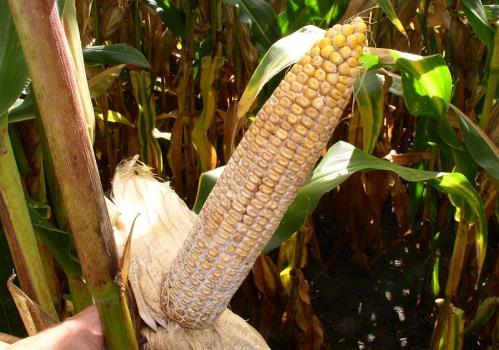 One ear rot taking hold in many fields is Diplodia ear rot. It tends to thrive when there is wet weather and mild during grain fill. Upright ears with tight husks may promote Diplodia development in certain conditions.
One ear rot taking hold in many fields is Diplodia ear rot. It tends to thrive when there is wet weather and mild during grain fill. Upright ears with tight husks may promote Diplodia development in certain conditions.
Growers may first notice tan spots on husks or bleached husks. When corn plants are severely infected, husks may drydown well ahead of normal and ahead of the rest of the plant.
 Starting at the base of the ear and progressing toward the tip, a white mycelial infection can be seen. In moderate to severe infections, seed may become rotted and begin to germinate on the ear. Diplodia causes reduced grain quality and quantity as a result of lower kernel size and test weight.
Starting at the base of the ear and progressing toward the tip, a white mycelial infection can be seen. In moderate to severe infections, seed may become rotted and begin to germinate on the ear. Diplodia causes reduced grain quality and quantity as a result of lower kernel size and test weight.
If you’ve had it before, look again as Diplodia is highly dependent on quantity of infected, unburied corn residue (stalks, cobs and kernels).